How to make a well under the house
When arranging autonomous water supply, a rather unusual solution is a well in the basement of the house. Such an arrangement of the source of autonomous water supply certainly has a number of advantages, however, there are some difficulties with its implementation.
Therefore, below we consider the features of the construction of a well in the house.
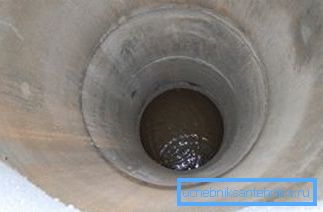
Well in the basement - all the pros and cons
First of all, let’s see if it’s possible to do a well inside a house. Many experts argue that construction should be carried out no closer than 5 meters from the house and in no case in the building itself. Such recommendations are based on the fact that the construction of a well may damage the foundation, and the presence of a water source in the basement or basement will make the room damp.
Partly there is some truth in this, however, the necessary distance from the foundation can also be retreated into the house. As for dampness, even with a relatively close location of the aquifer, it is not difficult to prevent it, because the water can be extracted with an electric pump, and the source itself will be tightly closed. In addition, good ventilation can be the solution. (See also the article How to choose a pump for a well: features.)
Proof of this is the multitude of houses whose owners successfully use wells located in basements and basements, and at the same time do not experience any problems with excessive dampness.
Merits
The advantages of such a solution, as mentioned above, there are quite a few, here are the main ones:
- The possibility of unauthorized access and pollution of the well from the outside is excluded. Therefore, such a well for a country house is the best option, especially if the owners live there not all year round, but, for example, only in summer.
- You can not worry about the safety of water-extracting equipment.
- There is no need for warming the deck and pipeline.
- Less length of communications, which saves on materials and installation work.
- There is no need to build a small house for the well, just close it with a tight lid.
As for the shortcomings of this design, we have already considered all of them.
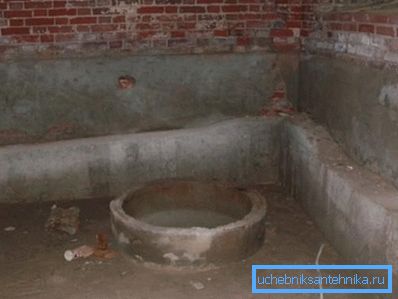
Construction of a well in the house
Types of arrangement of wells in the house
Immediately it should be said that there are two options for construction:
- Water supply source is carried out before building a house.
- Running a well in a house that is already built.
In the first case, the construction of the well does not have any particularities, the only thing is that it is necessary to decide in advance on the location of the house on the plot and its layout. To accurately determine the correct location of the source in a future building, you should apply the markup.
In the second case, it is somewhat more difficult to make a well, since it is not possible to use equipment, and it is not always possible to lower concrete rings into the basement. Therefore, they have to make their own hands on the spot. Next, we consider this option.

Preliminary work
Before proceeding to the implementation of the well, you must make sure that all the necessary conditions are in place for this.
First of all it concerns the sanitary standards, which are listed below:
- The location of the future source should be at least 50 meters from the nearest pollutant. This applies to cesspools, sewage wells, sewage toilets, etc. Often, site owners are interested in, is it possible to dig two wells side by side if the site has a dilapidated well, which is unprofitable to restore? In this case, the distance is also regulated by sanitary norms, since any well is a potential pollutant.
- The house should not be located closer than 30 meters to highways and highways.
- The depth of the sewer well in a private house should be above the level of the aquifer.

In addition, it is necessary to ensure that the aquifer is located at an accessible depth. The easiest way, if there are wells in the adjacent areas. In this case, you also need to ask the neighbors about the quality of water, the debit of the source and other characteristics in order to make sure that the decision is correct.

Concrete Ring Making
Work must begin with the manufacture of concrete rings, as this process takes quite a long time. Moreover, first you need to make a form. Plastic barrels or pipes can be used for this, however, it is not always possible to lower the forms of the required diameter and height into the basement.
In this case, the formwork should also be performed on site, for example, from steel sheets. The principle of production is quite simple - it is necessary to make two rings of a well, the diameter of one of which is less than the second by 20 cm. In this case, the thickness of the walls of the concrete ring will be 10 cm.
Tip! The inner ring should be slightly tapered so that concrete products can be more easily removed from the formwork.
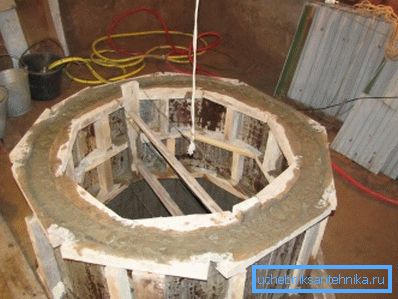
Instructions for making RC rings looks like this:
- Harvested rings are inserted one into another.
- Then the formwork is centered and fixed so that during the pouring there is no displacement of one ring relative to the other. To do this, you can use the strut of wooden wedges.
- Further in the formwork are installed vertical metal rods.
- When the forms are ready, the concrete should be made of cement, gravel, sand and water.
- The next step is to fill the formwork. It is carried out in layers, with a thickness of each layer of about 20-25 cm. At the same time, after each stage of casting, it is necessary to perform tamping with a metal rod.
- After a few days, the formwork must be disassembled and give concrete to finally gain strength. It will take at least 15-20 days.

Tip! If the rings are made without reinforcement, then the thickness of the walls should be increased to 15 centimeters.
Well device
After all the materials are ready, you can proceed directly to the device well. To simplify the work, it is advisable to make a tripod and hang the winch to it, which will simplify the transportation of the soil and the installation of rings.
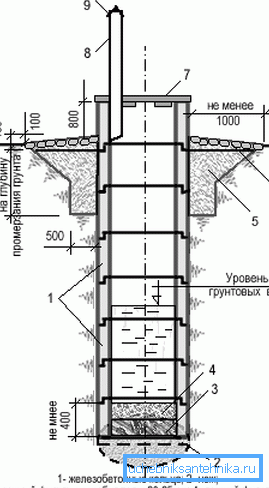
Work is performed in the following order:
- The first thing you need to do is deepen the diameter of the concrete ring. Its depth can be one or one and a half ring heights. In this case, the bottom of the resulting pit should be smooth.
- After that, a concrete ring is placed in the recess.. It should be positioned as evenly as possible relative to the horizontal plane.
- Next you need to go down into the ring and deepen the mine evenly undermining the soil under the bottom ring. The ring under its own weight will gradually settle. If large stones are caught in the ground, they should be turned out with a short scrap and taken to the surface in a bucket, or securely tied with a rope.
- As the top is cleared, new rings should be installed.. At the same time, it is necessary to lay a tarred rope in their seams in order to ensure sealing.
- If you notice that the rings are stuck, i.e. ceased to settle, they need to be weighed, putting the shield and the bags of stones on top. Under this weight, the construction will probably fall. In order for such a situation to not arise, you need to constantly control the horizontal position of the location.
- At a certain depth, water will begin to arrive in the mine, but it is still too early to stop the dredging process.. If necessary, water should be pumped out by the pump.
- When water arrives too quickly and aquifers appear, the deepening must be stopped..
- The next step is to run the filter at the bottom of the well.. To do this, you need to wash the large stones in advance and lay them on the bottom, then fill them with a layer of washed gravel or rubble. Such a filter will significantly reduce the impurities of sand in water.
- After that, the joints of the rings need to cover with a solution of liquid glass and cement.
- To prevent surface waters from entering the mine, an earthen lock about two meters deep should be made around the column..
- This concludes the bulk of the work..
After the house well is completed, it is necessary to equip its upper part. In no case can not make the hatch flush with the floor. The well should have a cap that will serve as a fence.
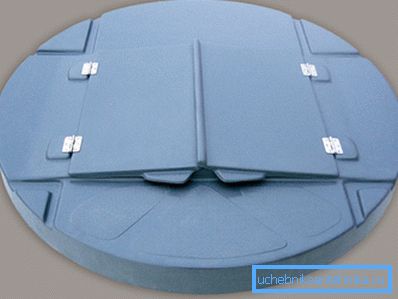
As a tip, it is easiest to install another concrete ring, which can later be trimmed with natural stone or wood, depending on the interior of the room. In addition, an important element is the well cover, which should be tightly closed. You can make it yourself from wood, or buy ready-made PVC or other material.
Tip! It is advisable to provide for the possibility of manual water intake using a metal bucket, in case of power cuts, which in rural areas often occurs.
After the well is fully completed, water intake equipment should be connected to it. Considering that the source is located inside the house, it is best to use a submersible pump, since the noise of its work will be inaudible, however, the price of the product is somewhat higher than surface apparatuses.
As for the power of the device, it is selected in accordance with the depth of the well and some other characteristics of the water supply system.

Note! Before starting to operate the source, water must be pumped out of it for 20 hours, which will allow flushing aquifers.
Conclusion
The device of wells in basement and socle rooms is rather difficult work. However, if there are suitable conditions for this, then all the time and effort costs will be fully justified by the many advantages of such a decision.
Additional information on this topic can be obtained from the video in this article.